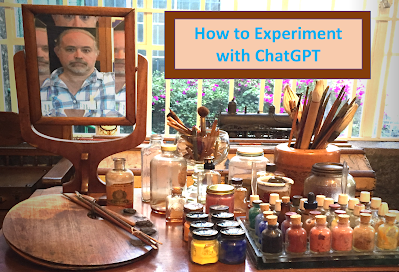As ChatGPT continues to make waves, is it time to learn more about it? One way to approach this is begin experimenting with ChatGPT within your context. Learn where ChatGPT can help and where it can benefit you. In other words, what do you want to get out of ChatGPT? This allows you to test your hypothesis and the surrounding assumptions to provide knowledge and insight into whether (in this case) ChatGPT can help you or not. Here is an example.
Start with the question: Can ChatGPT help my team improve? Validate this question. Conduct preliminary research to gauge if this is relevant for your team. Start by finding out if team members are interested in using ChatGPT. This can also help you identify assumptions and if there are any other variables in play that can impact the direction of the experiment. It can also help you narrow down an area that you think ChatGPT can help. After discussion with the team, team members believe that ChatGPT can help in retrospectives
Craft a hypothesis in a clear sentence on what you expect to find: Include ChatGPT in the retrospective can lead to better root cause analysis. Some team members had an assumption that ChatGPT could provide root cause analysis capabilities. A hypothesis can help you validate whether ChatGPT can provide better root cause information. You can also use the “if… then” form: if we use ChatGPT during our retrospective, it will provide better root-cause analysis results, leading to more effective actions for improvement.
Craft the experiment. Now that you have a sturdy hypothesis, it is time to craft your experiment. Describe the steps through your experiment. To do this, consider how long the experiment will run and who will be involved. In this case, you decide to include ChatGPT in the next three retrospectives in order to get a more meaningful set of results and to have time to determine if the actions are leading to more effective results. Determine who will use ChatGPT during the retrospective and how the questions and statements will be written. Also consider the metric you will use to validate your result and what success criteria you will use to determine if the hypothesis was true (or not). At this point, it is time to run the experiment.
Run the experiment. An experiment should be considered as recognized effort and categorized as real work to track in your backlog. Enact the steps listed in your experiment. Capture observations along the way and results upon the conclusion of the experiment. Get together with those who are involved in the experiment and determine what you’ve learned. Ask the question, did what we learn validate the hypothesis (or not)? Then determine what decisions you will make as a result of this experiment. In this case, should you to continue using ChatGPT for retrospectives (or not)? Determine if there are any next steps.
In conclusion, if you are thinking about ChatGPT, the key is to experiment. ChatGPT is a tool like other tools that may benefit you. Brainstorm where ChatGPT can help you in your context. Use the experiment to see if it does. Consider multiple experiments so that you build working knowledge of ChatGPT in your environment and working context.
---------
If you are interested in learning more about ChatGPT in relation Agile, Teamwork, or experimentation, consider reading the following articles:
- A Discussion with ChatGPT about Agile
- Are there Dangers with ChatGPT for Agile?
- Are there Benefits for adding ChatGPT as a team member?

Your blog post "How to Experiment with ChatGPT in Agile Environments" on CM for Agile offers practical insights into integrating ChatGPT into Agile processes for experimentation. Could you elaborate on what this entails? How would you define the boundaries of this sandbox environment, and what kind of tasks or scenarios would be suitable for initial experimentation?
ReplyDeleteTel U